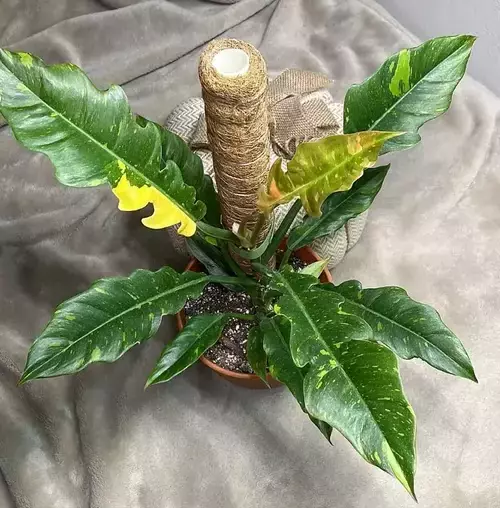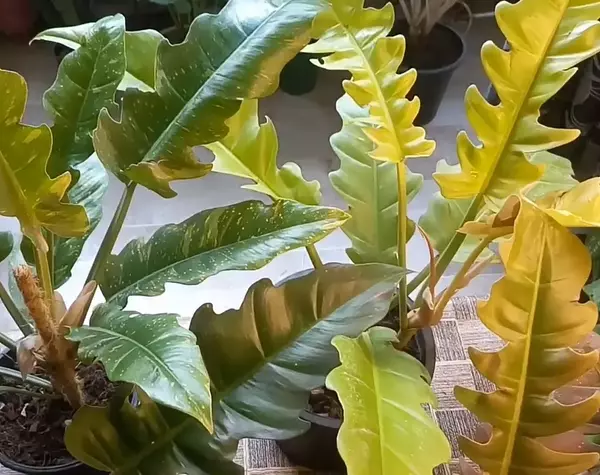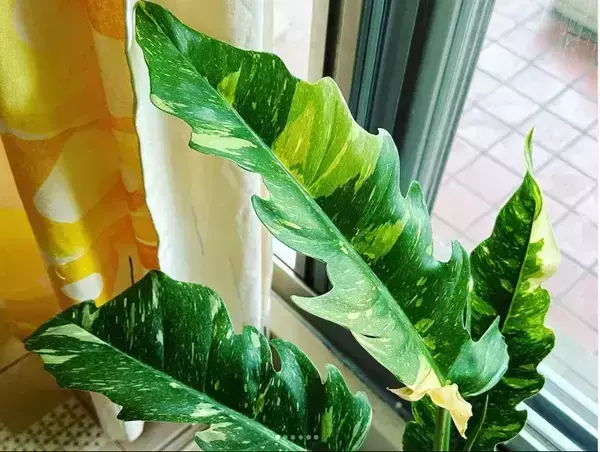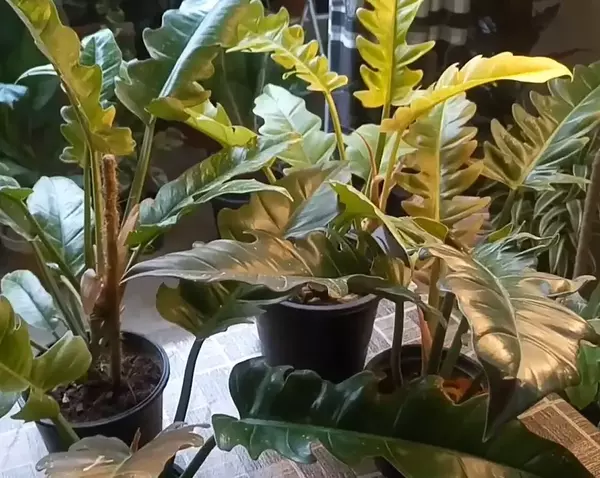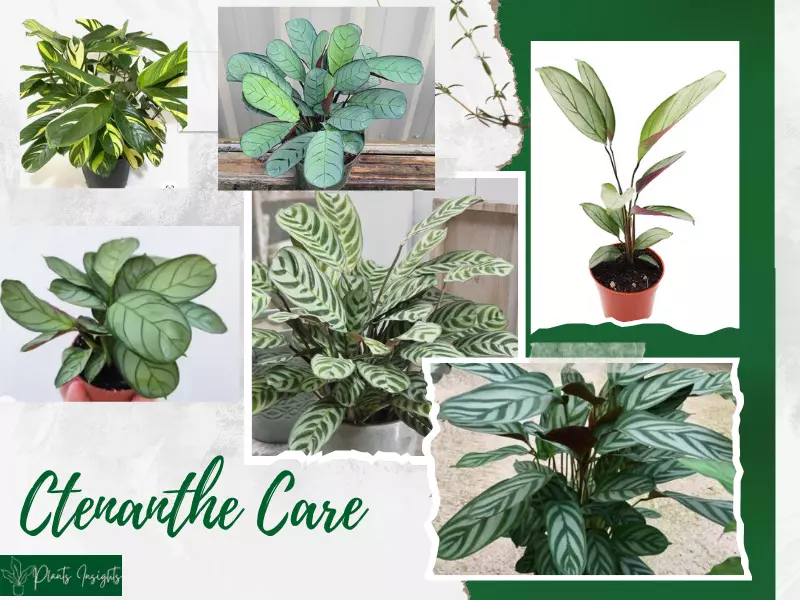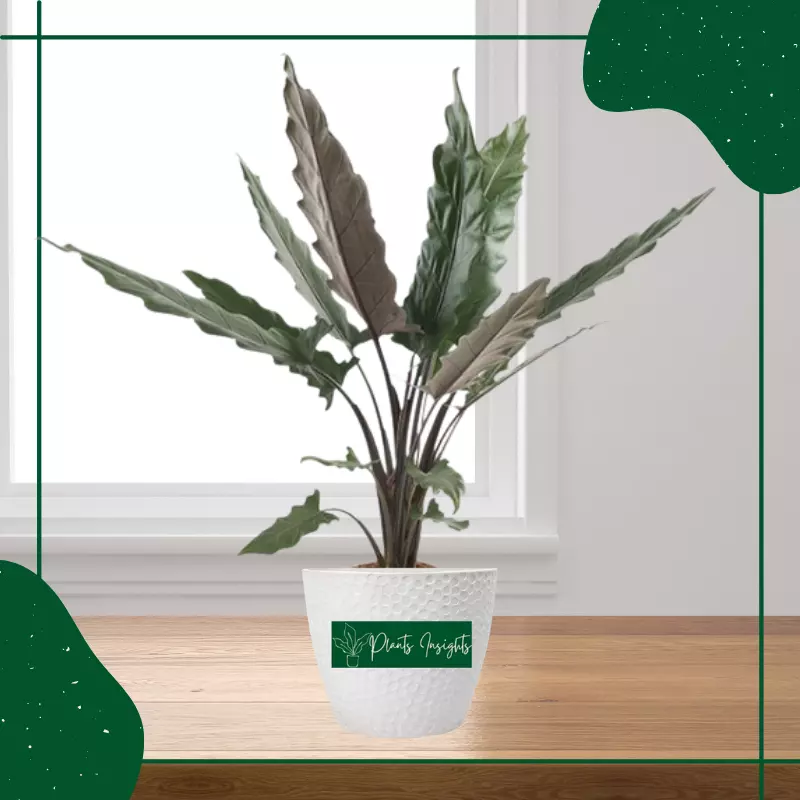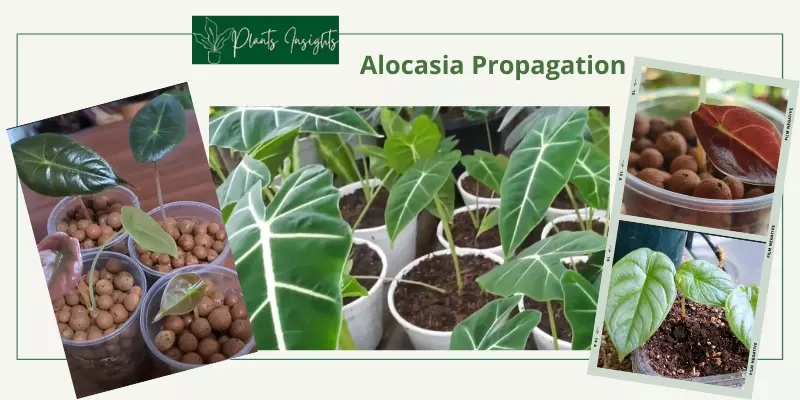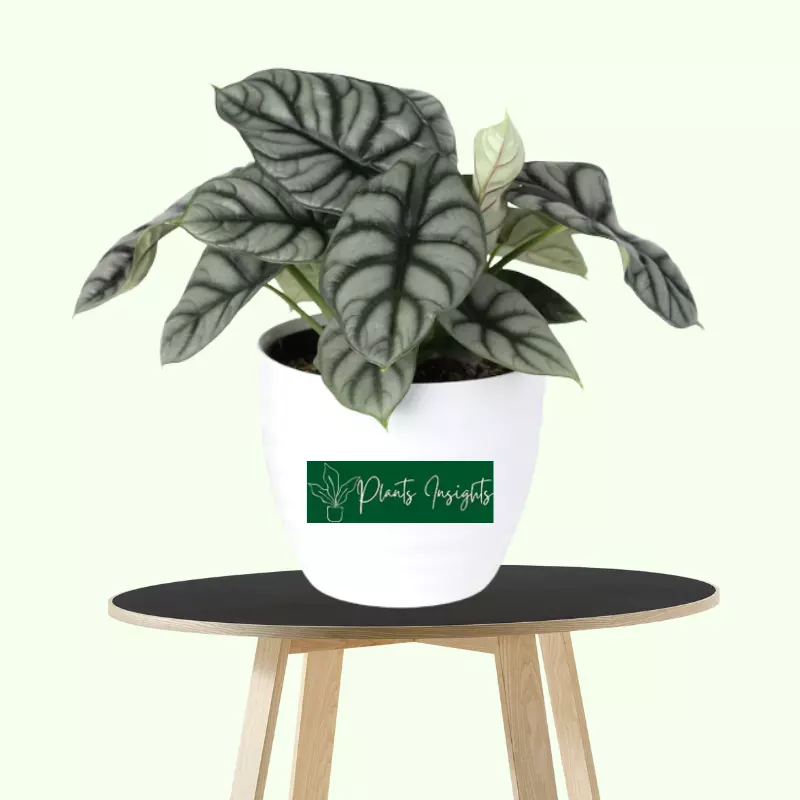Unleashing a maelstrom of botanical charm, the Philodendron Ring of Fire stands resplendently as a masterpiece of nature’s artistry, weaving together the vibrancy of hues and the allure of unusual form in an intimate dance of unparalleled allure. Philodendron Ring of Fire is a striking plant known for its vibrant foliage, featuring deep green leaves adorned with fiery orange-red markings. ‘Ring of Fire Philodendron’ is believed to be a hybrid between Philodendron Wendlandii and Philodendron Tortum and was originally known as ‘Henderson’s Pride’.
Native to the verdant rainforests of South America, the Philodendron Ring of Fire unveils its exotic narrative through a captivating series of striations and markings that leap from its leafy canvas-like brushstrokes painted by a master artist.
The ever-changing kaleidoscope of pigmentation is further accentuated by the sculptural beauty of its leaves, which elegantly unfurl into elongated shapes with serrated margins that add an extra layer of complexity and intrigue. With its spectacle of colour and form, the Ring of Fire deftly navigates the domestic landscape with grace and poise.
Closely-Related Allied Species: Philodendron Pastazanum, Philodendron White Knight, Philodendron White Princess, Philodendron Moonlight, Philodendron Verrucosum, Philodendron Mamei, Philodendron Splendid
Essential Products
Origin and Family
| Botanical Name: | Philodendron Ring of Fire |
| Family Name: | Araceae |
| Other names: | Philodendron Ring of Fire |
| Plant Type: | Hybrid – Philo Tortum x Philo Wendlandii |
| Origin: | South America |
| Color: | Dark green |
| Leaf Shape | jagged edged red, orange, white, and cream coloured leaves |
| Humidity: | 60% or more |
| Temperature: | 55°F to 80°F |
| Light Need | Partial shade |
| Propagation | Stem cutting |
| Soil type | Coarser, lighter, well-drained, rich in organic matter |
| Preferred PH | 6.1 to 6.5 |

Growth and Size:
Philodendron Ring of Fire features long, gorgeous, jagged-edged foliage that exhibits multiple colors, including red, orange, dark green, neon, white, and cream. The Ring of Fire Philodendron is a slow-growing vining plant that requires patience and could be challenging for beginners. Ring of Fire can grow more than a meter high with leaves up to 24 inches long and 16 inches wide.
The Philodendron Ring of Fire has many cultivars with variations in leaf colours and size depending on their climate. New leaves emerge as pinkish caramel colored and fade to green as they age; however, they retain their splashes and beautiful array of colors that give this plant its name, ‘Ring of Fire.’ Ring of Fire is only for serious plant collectors with a deep pocket.
Is the Philodendron Ring of Fire climber?
The Ring of Fire is known as a climbing plant. It possesses long, trailing vines that have the natural inclination to climb and seek support. The plant uses aerial roots along its stems to attach itself to various surfaces, such as moss poles, trellises, or other structures.
As the plant matures and grows, it will extend its vines and explore its surroundings, utilizing its climbing nature to reach for light and space. This growth habit makes this philodendron an ideal choice for those who wish to cultivate a visually striking and vertically oriented plant display. However, Ring of Fire is prone to grow unruly and might need a support to stay upright.
Usually plant owners don’t use moss pole for this plant due to its slow growth but in my experience Ring of Fire tend to grow larger leaves if mounted to a moss pole.
How do you care for a Philodendron Ring of Fire?
The key care factors to growing a healthy and vibrant Philodendron Ring of Fire
- Bright but indirect light.
- A well-draining soil mix with ample air pockets for roots to breathe. Plant in an appropriately sized container with ample drainage holes.
- Less frequent deep watering. However, don’t let these dry out completely between waterings.
- Keep Ring of Fire in warm temperatures and a constant humid environment.
- Feed your plants regularly with liquid fertilizer.

Watering
Being a tropical rainforest origin, the Philodendron Ring of Fire speaks the language of hydration while showing an innate understanding of seasons. In the halcyon days of summer, the Ring of Fire requires more frequent watering, perhaps once a week or whenever the top inch of soil has dried. Winter ushers in a more frugal approach, where watering should be curtailed to once every 10-14 days or when the first couple of inches of soil are dry.
The overwatering appears threateningly over many a houseplant, and the Ring of Fire is no exception. The repercussions can be severe, potentially causing root rot, a disease that can be deadly if left unchecked. Symptoms include yellowing leaves, wilting, and the unnerving appearance of black, mushy roots when the plant is uprooted.
To ensure that you are watering your plant correctly, allow the top inch of soil to dry out between waterings. Insert your finger into the soil to determine the moisture. If it comes out dry, it’s time to water. On the other hand, using a moisture meter or moisture sensor is quite helpful in examining soil desiccation if you are not sure.

Effect of Underwatering
Underwatering, on the other hand, manifests itself subtly. Please don’t let these dry out, and that’s the biggest reason why you might want to choose a ceramic pot for this plant. Ring of Fire is already a slower grower to begin with, but once you let it dry out, it will start working backward, and that is not what you want.
If your plant is thirsty, you might notice your Philodendron adopting a more wilted, listless posture, its normally vivacious leaves curling inwards or turning brown at the edges. In severe cases, the plant may drop leaves or display a stunted growth pattern.
Watering frequency of your Philodendron Ring of Fire mostly depend on several factors, such as type and pot size, the type of environment it’s kept in, the type of substrate used, and the light conditions.

Light Needs
The Ring of Fire thrives in bright, indirect light. It requires a moderate to high amount of light to maintain its vibrant foliage. While it can tolerate some morning or evening sun, direct sunlight should be avoided as it can scorch the leaves.
When placing the plant indoors, it is best to position it near a window that receives bright, filtered light. East or west-facing windows are ideal, as they provide the right balance of light intensity. You can also place the plant a few feet away from a south-facing window to prevent direct sun exposure.
Excessive exposure to light can lead to sunburned or yellowed leaves, and the foliage may develop brown spots or scorched edges. Please do not put your philodendron in direct sunlight, as the sun could burn the foliage, and the damage is permanent.
Effect of Low Light
On the other hand, lack of light can cause the leaves to become pale, leggy, or develop a dull appearance. Furthermore, the plant may grow incredibly slowly, and the variegation effects will be quite minimal.
It’s important to strike a balance and observe the plant’s response to light conditions. Adjust the placement accordingly to ensure the Philodendron Ring of Fire receives enough bright, indirect light without being subjected to harsh direct sunlight.
If you notice tiny yellow or brown spots on the leaves, chances are the sunlight is intense for the foliage, and you might want to move your plant a few feet away from the window to avoid foliage damage.

Humidity
The Philodendron ‘Ring of Fire’ with its roots anchored in the lush, humid climes of tropical rainforests, has an intrinsic affinity for elevated humidity levels. Ideally, this botanical marvel thrives in an environment with humidity levels ranging from 60% to 80%.
When this striking specimen finds itself in an environment deprived of sufficient humidity, it can show signs of distress. The symptoms of inadequate humidity manifest as brown leaf tips, curling leaves, and a general dulling of its normally resplendent foliage.
To raise the humidity level, several strategies can be employed:
Humidity Tray: Place the plant on a tray filled with water and pebbles, ensuring that the pot doesn’t touch the water. As the water evaporates, it elevates the surrounding humidity.
Room Humidifier: Employ a humidifier in the room where the ring of fire is situated to maintain an ambient moisture level. We highly recommend investing in a good plant humidifier for healthy plant growth.
Grouping: Keep the Ring of Fire amongst other tropical plants. Collective transpiration creates a micro-environment of increased humidity.
Misting: Regularly mist the plant with water to temporarily augment the humidity around its leaves.
Temperature
With regard to temperature, the Philodendron ring of fire favors a temperate embrace ranging from 55°F to 80°F. It is within this thermal cradle that the plant exhibits its most exuberant growth.
Exposure to temperatures that plummet below this range can cause the plant to enter a state of shock. The leaves may turn yellow or drop, and the growth may become stunted. Contrary to this, sustained exposure to overly high temperatures can cause the leaves to wilt or exhibit a scorched appearance.
Moreover, the ‘Ring of Fire’ is a creature of consistency and exhibits signs of unhappiness due to sudden fluctuations in temperature. Abrupt changes can induce stress, leading to leaf drop or a general languishing appearance. It is prudent to keep this tropical beauty away from draughty areas, air conditioning vents, or heat sources that might trigger sudden temperature variations.
The Philodendron ring of fire seeks an environment that echoes its tropical heritage, an abode of warmth and moisture. Tending to its humidity and temperature needs with care and consistency will ensure that its fiery foliage continues to burn bright and vibrant.

Soil Requirement
The Ring of Fire Philodendron has a keen preference for a specific type of soil, one that mirrors the rich, well-drained soils of its tropical rainforest origins.
Ideally, the soil mix for this flamboyant specimen should be light, well-aerated, and fast-draining, allowing water to pass through without too much retention that may lead to root rot. Additionally, it should be nutrient-rich to support the vibrant, variegated growth of the plant.
When it comes to pH levels, the ring of fire exhibits a broad tolerance, prospering in a range from 6.1 to 6.5. It signifies a preference for slightly acidic to neutral soil, which encourages optimal nutrient uptake.
Recipe
To concoct your own potting mix would delight this philodendron. Consider a mixture that incorporates 3 handfuls of organic potting soil preferably fox farm ocean forest, 4 handfuls of Orchid bark, 1 handful of Activated Charcoal, quite a handful of Worm castings , 2 handfuls of Perlite, and a little bit of pumice. This chunky homemade soil mix ensures excellent drainage and airflow to the roots.
For those seeking ready-made options, several commercial mixes are available on the market. An indoor potting mix designed for “tropical” or “jungle” plants will usually suffice. Look for a blend that boasts ingredients like peat moss, coconut coir, perlite, or vermiculite. A ‘Philodendron’, ‘Aroid’, or ‘Orchid’ potting mix can also be an excellent choice, already tailor-made to meet the needs of such plants.
You can also choose from our recommended potting mixes available on the market, such as:
By providing this philodendron with its preferred soil conditions, you offer it a nourishing bedrock upon which it can ignite its spectacular display of color and form.

Repotting
The Ring of Fire, despite its vibrant splendor, does not necessitate frequent repotting, which speaks volumes about its generous nature. Generally, repotting should be considered every two to three years or when you notice that the plant has outgrown its current pot, evidenced by roots spiraling around the surface of the soil or poking out of the drainage holes.
Repotting is best performed in the spring or early summer, aligning with the plant’s active growth phase. This timing offers the benefit of warmer temperatures and longer daylight hours, allowing the plant to recover more swiftly from the disturbance of repotting.
Guide to repot
Here are the step-by-step instructions to repot your Philodendron.
Preparation: Begin by preparing your new pot. It should be 1-2 inches larger in diameter than the current one, and ensure it has ample drainage holes. Fill the bottom with a layer of your chosen potting mix.
Removal: Carefully remove the Philodendron from its current pot. If the plant is tightly root-bound, you may need to squeeze the sides of the pot to loosen it. Be gentle during this process to minimize root damage.
Root Inspection: Once removed, inspect the roots. If you spot any that are black, mushy, or have an unpleasant smell, prune these away, as they may be affected by root rot.
Repotting: Place the plant into the new pot. The top of the root ball should be just below the rim of the pot. Fill around the plant with potting mix, firming it gently with your fingers to eliminate air pockets.
Watering: Water the plant thoroughly after repotting to help it settle into its new home and establish good contact between the roots and the new soil. Ensure excess water drains away.
Post-Repotting Care: Keep your repotted Ring of Fire in a shaded location away from direct sunlight for a few days to a week, allowing it to adjust to the changes and recover from any stress.
With this guide, this can be a simple, rewarding process, allowing your exotic houseplant to grow and flourish with renewed vigor in its refreshed abode.

Philodendron Ring of Fire Propagation
Philodendron Ring of Fire can be propagated via stem cuttings and air layering; however, the rooting of the cuttings is a bit slow, usually stretched to several weeks, and the success rate is a bit low. If you want to propagate Ring of fire, you need a lot of patience, as propagating this plant is not a walk in the park.
Stem Cutting Propagation
However to propagate one of these is bit hard because the stems are really thick first of all so there’s high chance of rot. Secondly, the internode spacing is super small unlike Verrucosum which has large internodal spacing to cut and then to let it dry out a little bit and even rot a little bit before it gets to the node where the new plant will grow. But for Philodendron Ring of fire there is half a centimeter internodal spacing which makes it difficult to propagate through stem cutting.
Guide
Follow a step-by-step guide for Philodendron Ring of Fire propagation via stem cutting.
Propagation in Water
For a Ring of Fire cutting with very little aerial roots and a thin stem, I usually put it in water to root.
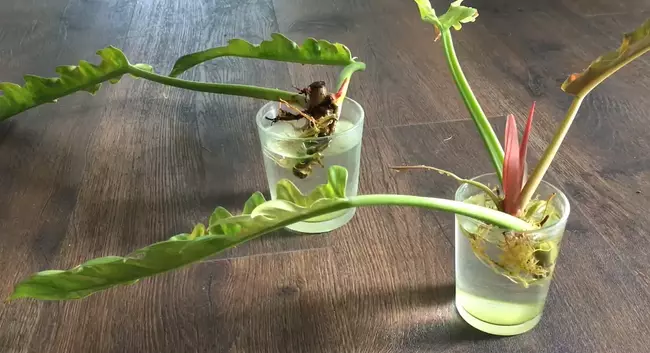
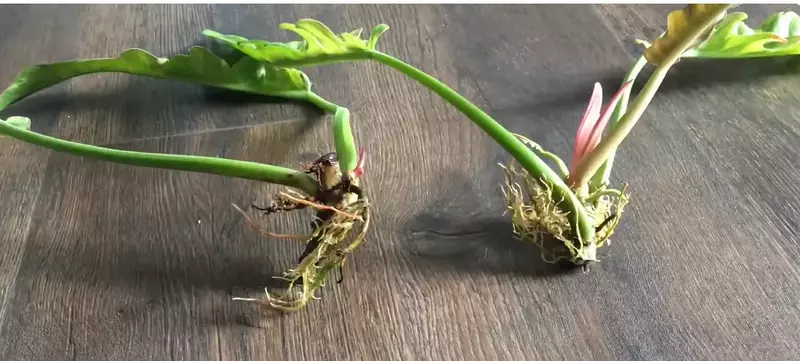
Propagation in Sphagnum Moss and Potting soil
You can also use sphagnum moss and aroid potting mix for rooting your cuttings. I prefer using sphagnum moss for cuttings that have thick stems and have a little bit of aerial roots.
Moreover I plant the cuttings into potting mix directly if they already have a lot of aerial roots and are rooted already into the potting mix of mother plant.
Before putting your cuttings in sphagnum moss or potting mix, you might need to seal the edge of your cutting by applying cinnamon powder, anti-fungal powder, or activated charcoal to prevent rotting.
Choose a appropriate sized plastic pot because the leaves might be long and for rooting stability of the cutting is important to avoid damage to the roots. Now place the Ring of Fire cutting into the pot , and cover the node with a little potting mix. You don’t want to bury the node too much in the potting mix as it will increase the incidence of over-watering.
Therefore, only put like half a pot of potting mix, and when the new vine comes up, you can always add more potting soil later.
When you pot the cutting in potting mix, please ensure the growing eye is facing up so that the growth can find its way up and continue growing leaves facing up.
Air Layering Propagation
Philodendron Ring of Fire grows aerial roots along its stem and can be propagated using air layering method. This method is beneficial in case you don’t want to cut your plant and root the cuttings.
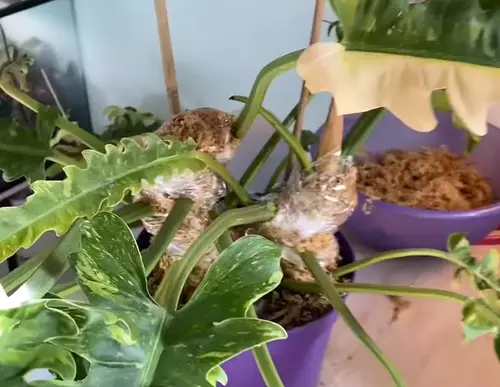

Fertilizing
The Philodendron Ring of Fire draws vigor from periodic fertilizing to maintain its vibrant, variegated display. Under ideal conditions, this mesmerizing specimen should be fertilized during the active growing season, from spring through early fall. A monthly application is usually sufficient, allowing the plant to harness the nutrients necessary for its lush growth. Fertilizer application can be minimized during the winter months, aligning with the plant’s natural dormancy.
In terms of what type of fertilizer to use, a balanced, water-soluble houseplant fertilizer is generally recommended. Look for something with a balanced NPK ratio, such as a 20-20-20 diluted to half strength, to avoid over-fertilization. Alternatively, a formulation slightly higher in nitrogen can also be used to support leafy growth. Always follow the package instructions regarding dilution and frequency.
Application should ideally occur after watering to avoid direct contact of the fertilizer with the roots, which could potentially lead to root burn. Water your Ring of Fire as usual, then apply the diluted fertilizer solution in place of a second watering.
An excess of nutrients can lead to salt build-up in the soil, manifesting in leaf tip burn, wilting, or an overall slowing of growth. In severe cases, it can result in root damage that might jeopardize the plant’s health. If you notice such symptoms and suspect over-fertilization, leach the soil with thorough watering and reduce the frequency of fertilization.
Effect of Lack of Nutrients
Nutrients deficiency on the other hand, may result in slower growth, yellowing leaves, or a lack of the vibrant variegation that is the Ring of Fire’s trademark. If your plant exhibits these signs despite optimal lighting and watering conditions, it might be an indication that it’s time for a nutrient boost.
Here are some good fertilizers for your Philodendron available on the market:
- Philodendron Plant Food, Indoor Plant Food Liquid Fertilizer
- Liqui-Dirt Nano Powder All-Purpose Organic Plant Food
- Osmocote Smart-Release Plant Food
As a slow grower, this Philodendron requires regular fertilization, but it’s important to note that over-fertilization won’t speed up the growth but can harm Philodendron Ring of Fire. Moreover, too much fertilizer can lead to the buildup of salts in the soil, which can damage the plant’s roots and cause leaf burn.

Pruning and Maintenance
The Ring of Fire is a slow-growing plant, and its splendid, variegated foliage doesn’t require frequent pruning. However, occasional pruning can enhance both the growth and aesthetics of your Ring of Fire.
Trim away any yellow or brown leaves that may occur due to natural aging or less-than-ideal conditions. It will help the plant to channel its energy towards the growth of healthy foliage. Pruning is best undertaken in spring or early summer, during the plant’s active growing period. Always use clean, sharp tools to prevent the spread of disease.

Toxicity
While the Philodendron Ring of Fire is undeniably a visual delight, it hides a less appealing characteristic beneath its vibrant facade: toxicity. Like many other members of the Philodendron genus, the Ring of Fire contains calcium oxalate crystals, which can cause harm when ingested or even when they come into contact with the skin.
Coming into contact with the sap of the plant may cause skin irritation or an allergic reaction. Symptoms may include redness, swelling, itching, and, in rare cases, a rash. It is advised to wear gloves when handling or pruning the plant to avoid skin contact.
Ingestion of the plant can cause much more severe symptoms, including a burning sensation in the mouth and throat, nausea, vomiting, and difficulty swallowing. If any part of the plant is ingested, it is advised to seek immediate medical attention.
When it comes to our beloved pets, the Philodendron ring of fire poses a significant risk as well. If a curious cat or dog were to nibble on its leaves, they could experience similar symptoms to humans, such as oral irritation, excessive drooling, vomiting, and difficulty swallowing. If you suspect your pet has ingested part of the plant, contact a veterinarian as quickly as possible.
Despite its beauty, the ring of fire should be kept out of reach of children and pets to avoid any accidental ingestion. It’s important to appreciate its striking beauty from a safe distance, always bearing in mind the fiery secret this enchanting specimen conceals.

Diseases & Pests
The Philodendron Ring of Fire, while a robust and forgiving houseplant, is not immune to a variety of pests, diseases, and common issues that may deface its vibrant allure.
Diseases
In terms of diseases, the ring of fire is susceptible to root rot and leaf spot diseases, often caused by overwatering or poor air circulation. Root rot manifests as wilting, yellowing leaves and a foul smell emanating from the soil.
The best treatment is prevention; ensure the plant is watered correctly and the soil drains well. If root rot does set in, it may be necessary to repot the plant in fresh soil, trimming away any decayed roots.
Leaf spot diseases can be identified by dark, often circular patches that appear on the leaves. Improving air circulation and avoiding water on the leaves can prevent this. If the disease occurs, remove the affected leaves and treat the plant with a suitable fungicide.
Pests
Common pests that may be attracted to the ring of fire include mealybugs, aphids, spider mites, and scale insects. These pests can weaken the plant by feeding on its sap, resulting in discolored or distorted leaves.
To counter them, regularly inspect your plant for any signs of infestation. If found, pests can be removed manually or treated with an insecticidal soap or neem oil spray. For more severe infestations, a systemic insecticide may be necessary.
Common Problems
This philodendron can also suffer from common issues such as yellowing leaves or loss of variegation. Yellowing leaves can be a sign of overwatering, underwatering, or exposure to too much light. Adjust care conditions as needed to resolve these issues.
Loss of variegation, on the other hand, is often a result of insufficient light. While this philodendron does not require direct sunlight, it does need bright, indirect light to maintain its vibrant, multi-colored leaves. If the plant is not receiving enough light, its leaves may revert to a solid green color. If this occurs, gradually increase the amount of light your plant receives.
While these issues may seem daunting, the Philodendron ring of fire remains a resilient species. With regular inspection, prompt action, and appropriate care adjustments, you can ensure that your beloved plant continues to burn brightly amidst the challenges of its indoor environment.

Common Queries
What does an overwatered Philodendron Ring of Fire look like?
If a Philodendron is receiving excessive water, it will exhibit symptoms such as yellowing and drooping leaves. Additionally, the soil will become oversaturated and waterlogged. One reliable indicator of overwatering is the presence of edema, which manifests as water-filled blisters appearing on the surface of the leaves. Monitoring these signs will help you identify and address overwatering issues in your Philodendron plant.
Do Philodendrons like to be misted?
The Philodendron Ring of Fire can thrive in typical household humidity levels, but providing higher humidity can promote the growth of larger leaves. Regular misting of the plant will be beneficial in creating a more humid environment. For optimal growth, maintain temperatures between 55-80 degrees Fahrenheit during the day and ensure temperatures stay above 55 degrees Fahrenheit at night. By adhering to these temperature guidelines, you can support the healthy development of your Philodendron.
Should you water Philodendron from the bottom?
Potted Philodendrons have a preference for bottom watering, which means providing water from the bottom rather than watering from above. This method is especially important for seedlings, as they are more susceptible to damage when watered from the top. To meet their moisture needs, it is advisable to place seedlings in a tray of water, allowing them to soak up the water from below. This approach ensures that these plants receive the necessary hydration while minimizing the risk of harm during the early stages of growth.

Conclusion
The Philodendron Ring of Fire is a captivating plant that adds a touch of tropical allure to any indoor space. With its vibrant green leaves adorned with fiery orange-red markings, it serves as an eye-catching centerpiece or a beautiful addition to a collection of houseplants.
While it requires moderate care, such as well-draining soil, indirect bright light, regular watering, and a warm, humid environment, the rewards of its stunning foliage make it well worth the effort. With proper attention and a suitable environment, the Philodendron Ring of Fire can thrive and bring a touch of exotic beauty to your home or office.
Happy gardening!
Related Posts
Common Houseplant Pests and How to Get Rid of Them?
Household pests are the most irritating and unwilling aspects one never wants to deal with. They create a very unsatisfying atmosphere in your garden.
How To Care & Propagate Ctenanthe (Never Never Plant)
Ctenanthe, also known as the “Never Never” plant, is a beautiful and multi-colored plant that can bring life and color to any interior. The Never Plant belongs to the Marantaceae group of flowering plants.
Alocasia Lauterbachiana | Purple Sword Plant Care Guide
Alocasia Lauterbachiana – Purple Sword or Elephant’s Ear Plant, is a perennial of Araceae family. It is native to the Southeast Asian region.
Alocasia Propagation through Rhizome Division, Corms & Offsets
For Alocasia lovers,we are sharing the successful Alocasia propagation methods and how to propagate Alocasia.
Alocasia Silver Dragon | Alocasia Baginda Care Guide
Alocasia Silver Dragon | Alocasia Baginda ongs to the family Aroid and is a most prominent part of the “Alocasia Jewel family”.








